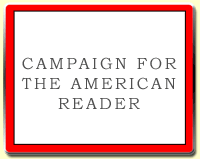Anthony Swofford served in a U.S. Marine Corps Surveillance and Target Acquisition/Scout-Sniper platoon during the Gulf War. After the war, he was educated at American River College; the University of

California, Davis; and the University of Iowa Writers' Workshop. He has taught at the University of Iowa and Lewis and Clark College. His fiction and nonfiction have appeared in the
New York Times,
Harper's,
Men's Journal,
The Iowa Review, and other publications; his memoir
Jarhead was a major
New York Times bestseller, and the basis for the movie of the same name.
Swofford's new book is
Hotels, Hospitals, and Jails.
One of his five best books about war, written by authors who served, as told to the
Wall Street Journal:
Going After Cacciato
by Tim O'Brien (1978)
It happens a number of times a year: I'm going about my day, grocery shopping, walking the dog, and—blam—suddenly I'm inside this masterly Vietnam  novel, sitting in the observation post with Paul Berlin, fantasizing about the chase to bring back Cacciato, a fellow soldier who has gone AWOL with the aim of walking all the way to Paris. This is the constant fantasy of every grunt, to walk out of the war toward a place that just might be better, possibly European, with wine and with women. The book has been labeled surrealist, but I would assert that it is a work of clinical and heartbreaking realism. The clarity and luminosity of the prose is uncompromising, and the war, after all, happened, and it happened to soldiers just like Paul Berlin and Cacciato. Paul dreams of what he will do after the war, a plan that includes touring Europe, learning French and going to Paris, where he will "drink red wine in Cacciato's honor," but the reader may be inclined to tip a glass in honor of both men.
novel, sitting in the observation post with Paul Berlin, fantasizing about the chase to bring back Cacciato, a fellow soldier who has gone AWOL with the aim of walking all the way to Paris. This is the constant fantasy of every grunt, to walk out of the war toward a place that just might be better, possibly European, with wine and with women. The book has been labeled surrealist, but I would assert that it is a work of clinical and heartbreaking realism. The clarity and luminosity of the prose is uncompromising, and the war, after all, happened, and it happened to soldiers just like Paul Berlin and Cacciato. Paul dreams of what he will do after the war, a plan that includes touring Europe, learning French and going to Paris, where he will "drink red wine in Cacciato's honor," but the reader may be inclined to tip a glass in honor of both men.
Read about
the other books on the list.
Also see
Karl Marlantes's top ten war stories.
--Marshal Zeringue



















































